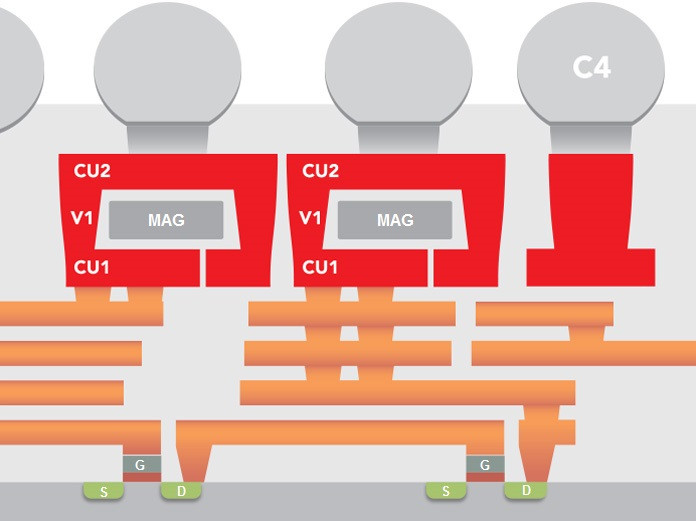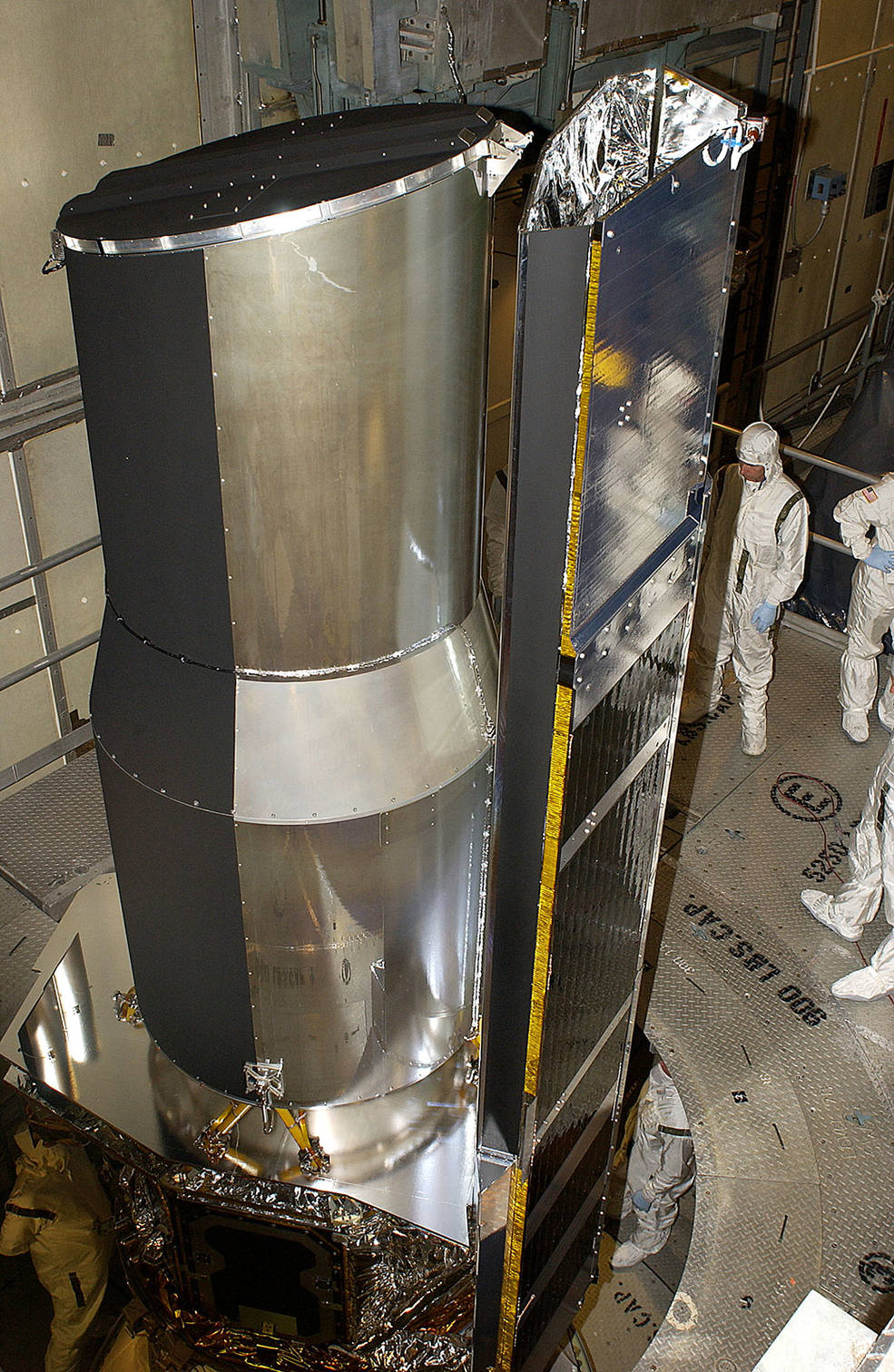Most Read articles – Intel process, Quantum annealing, Magnetic components
by Alun WilliamsLet’s look once again at the five most read articles on ElectronicsWeekly.com that were written in the last week, via the stats of Google Analytics. See what your peers have been reading this last seven days.
What are the topics covered? There’s talk of Intel’s process technology plans, a flurry of GaN-on-Si patents, the Spitzer Space Telescope concluding its mission, a quantum annealing processor from Tokyo University and the use of magnetic components.

5. Deeply-on-chip magnetics make agile PCUs and slash PCB footprint
New York-based fabless chip firm Ferric has teamed up with TSMC to put magnetic components on the metal layers of integrated circuits. The first product of the collaboration, Fe1038D, has a 2.0 x 3.2mm flip-chip die (<400μm thick) that includes all magnetics and passives needed to deliver 3A at between 0.6V and 1.5V from 1.8V-2.5V, with efficiency peaking above >85%. These chips can also be ganged together to deliver up to 12A.
4. Patent flurry for GaN-on-Si
Intel and Macom are leading the GaN-on-Si patent landscape for RF electronics applications, according to Yole Developpement. Intel’s RF GaN-on-Si patent portfolio mainly relates to III-N transistors used in SoC , RF switches, ultra-short channel lengths, field plates, and III-N/Silicon monolithic IC, says Yole. Intel has adopted a global patenting strategy with 17 patents pending in the US and 20 in Taiwan.

3. Farewell to NASA’s infrared Spitzer Space Telescope
NASA’s Spitzer Space Telescope will conclude its mission, to study the universe in infrared light, on 30 January 2020, after more than 16 years of service. Farewell to NASA’s infrared Spitzer Space Telescope – pre-launchSpitzer has revealed previously hidden features of known cosmic objects but also discoveries beyond the imaginations of its designers, says NASA, such as planets outside our solar system, called exoplanets, and galaxies that formed close to the beginning of the universe.
2. Quantum chip solves ‘travelling salesman’ problem for 22 cities
Tokyo University of Science researchers have built a chip-based quantum annealing processor that can solve the classically thorny ‘travelling salesman’ mathematical puzzle, which gets far more complex every time a new city is added, for up to 22 cities. According to the university, this is “something that would take about 1,200 years for a high-performance von Neumann CPU”, but the chip “can solve the travelling salesman problem for 22 cities instantly” until now using quantum processing it “has only been able to solve the travelling salesman problem involving a maximum of 16 cities”.

1. Intel to return to 2-2.5 year process cadence
“We want to get back to a two to two-and-a-half year cadence,” says CEO Bob Swan, “and shortly after launching 10, our expectations is we will have our first 7 nanometer product launch in the latter part about 2021 with CPUs to closely follow. So 10 is ramping. We will go to 10+ for clients and to 7 on a two year cadence in 2021.” Intel’s 10nm process was originally slated for 2016. It is generally considered to ve as advanced as TSMC’s 7nm process which is the most advanced process in production.